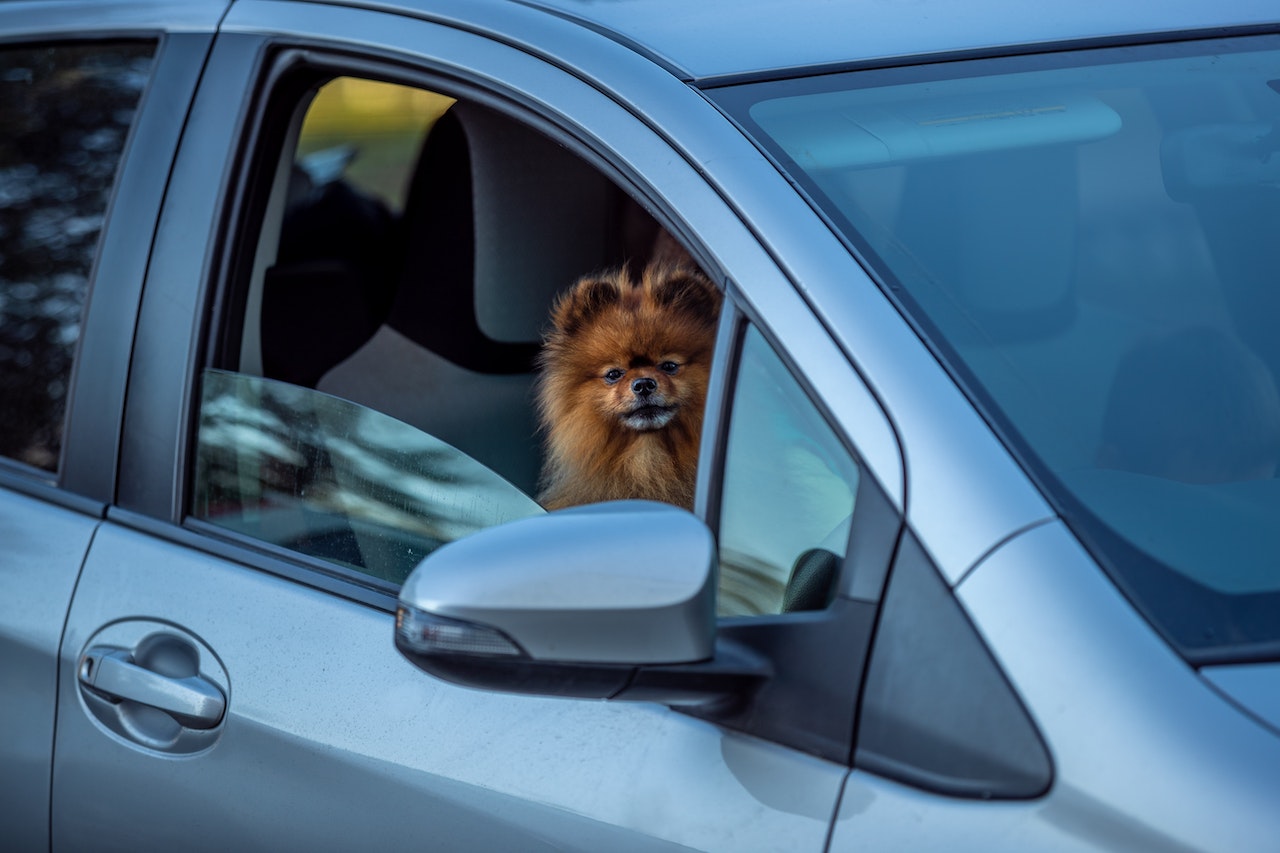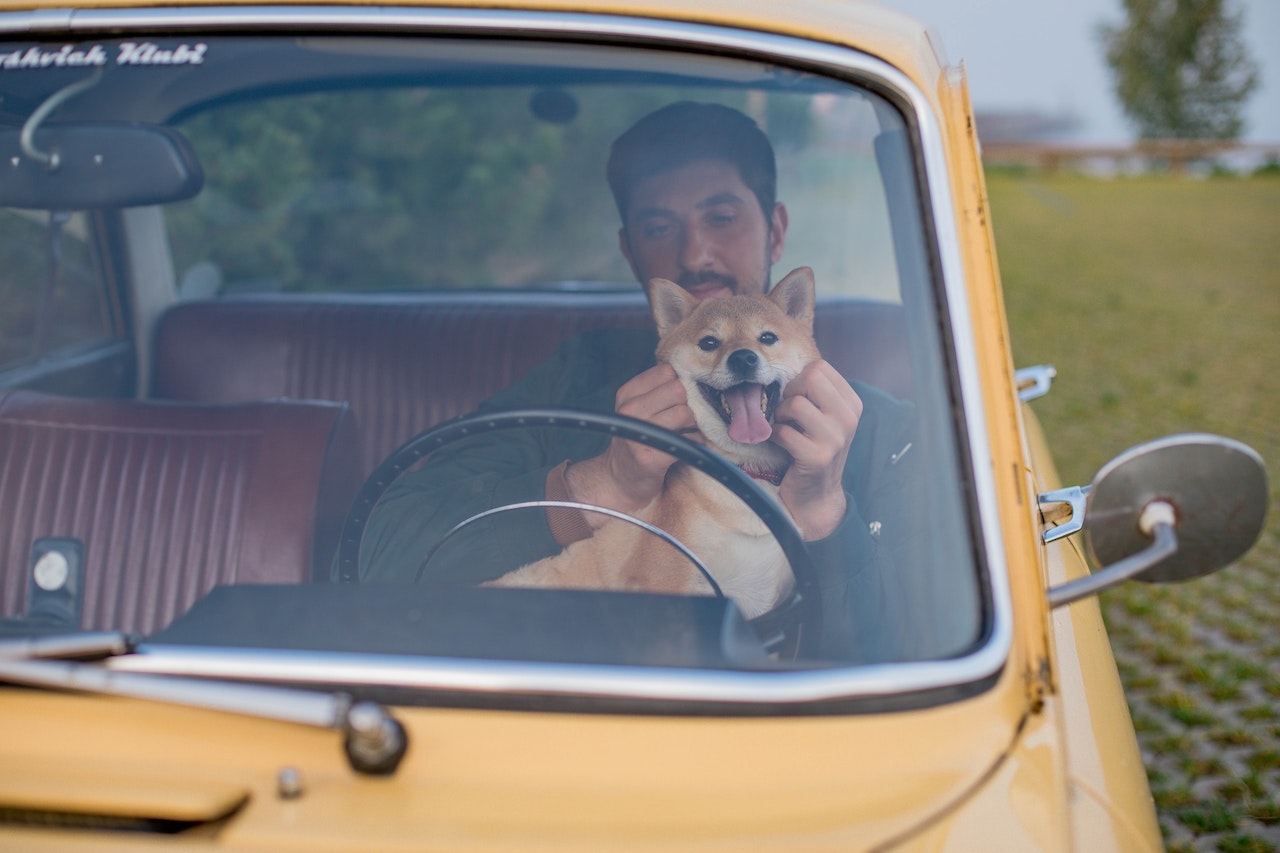
Putting on a seat belt is mandatory and is something that everyone is aware of. Before starting the automobile, you check to see that everyone is wearing a seat belt. One can reasonably wonder why it is that only human beings use safety belts when driving. But what about the four-legged passengers in the trunk?
Dogs are a popular companion for people on all kinds of outings, from social gatherings to long road trips. However, unless your dog is restrained by a dog seat belt, driving with them isn’t necessarily the safest choice. In the case of an accident or unexpected halt, a dog seat belt may protect your pet, you, and the other passengers in the vehicle. A dog seat belt will prevent your pet from risking injury by hanging their heads out the car window.
If this is the first time you’ve heard of a dog seat belt, you probably have a lot of questions, and we’ll get to them all below. This article will discuss the definition of a dog vehicle seat belt, as well as its advantages and disadvantages. Continue reading the text or use the links below to go to a specific section to learn more about automobile safety while traveling with your dog.
What Exactly Is a Dog Seat Belt?
A dog seat belt is a harness with a built-in safety belt. It’s a safe and effective method of keeping your dog in the backseat while you drive. It’s crucial to choose a dog seat belt that won’t harm your pet, however, and there are several options.
Many dog seat belts connect to the straps of your regular seatbelt, despite the fact that those straps were not made with canines in mind. If your dog isn’t properly restrained, it may potentially be thrown from the car seat.
Heavy-duty dog seat belts with thick, cushioned straps are optimal since they disperse an impact’s power more uniformly throughout the dog’s body. Dogs should be able to sit and lay down comfortably while wearing a seat belt, and the tethers should be fastened at the back rather than the neck.
The seat belt is designed to distribute the force of the leash over your dog’s chest and back, minimizing the impact on its neck in the event of an accident or quick halt. Your dog should be able to sit comfortably in the vehicle, but the seat belt straps should be short enough that your dog will not be able to reach the seat in front of them in the case of an accident or quick halt.
If you want your dog to enjoy vehicle rides with you while being secure, you need to find a dog seat belt that works for them.
How Important Are Seat Belts for Dogs?
There are several safety advantages to using dog seat belts for both canines and their owners. There are a number of potential dangers posed by traveling with an unsupervised pet.
To give you an idea, an 80-pound dog traveling at 50 miles per hour in an unsecured vehicle may become a 2,400-pound missile in an instant. As a result, the situation will quickly escalate to a hazardous level.
Some states even have laws mandating that all dogs ride in vehicles with seat belts for their protection. In the states of Connecticut, Maine, Massachusetts, Minnesota, New Hampshire, and Rhode Island, canines are required to wear a safety harness or be restrained in the car at all times.
Dog Seat Belt Benefits
There are many benefits of using seat belts for dogs, such as:
- Prevents jumping out of the window
- Reduces risk of injury upon airbag deployment
- Reduces risk of dog ejecting from the vehicle in a crash
- Reduces distracted driving
- Prevents dogs from being injured by external debris if the windows are open
Dog Seat Belt Risks
There are numerous positive aspects of using dog seat belts, but this does not imply that there are no negative aspects. Many dog seat belts haven’t been tested in collisions, therefore their safety is still unknown.
The Center for Pet Safety did, however, test dog harnesses to verify their effectiveness2 using specially built crash test dummy dogs weighing 25 pounds, 45 pounds, and 75 pounds. Since there are currently no government or industry standards for canine seat belts, manufacturers cannot claim that their products have been “crash-tested,” even if a couple of the harnesses did pass the test.
Crate travel is preferable to using a dog seat belt in a vehicle. Having your dog contained in a crate while driving will ensure that it doesn’t cause distractions or try to poke its head out the window. However, in the event of an accident, your dog might still get injuries while confined in the crate.
Car Safety Tips

You keep your dog safe inside your house by feeding and caring for them. You keep your dog safe when you’re out on a walk by keeping them on a leash. So why should a car be any different? It’s just as crucial to keep your dog safe inside a car as it is to keep them safe anywhere else, so here are some care safety tips you should be aware of:
- Unsafe vs. safe places in the car
- Neither your lap nor the passenger seat is a good location for a dog in the automobile. Your dog’s presence on your lap may be both distracting and dangerous. When your dog rides a shotgun, it’s in danger from the passenger-side airbag..
- A crate is a much safer place to keep a dog in a car. Crates will keep your dog safe while driving, and some even have padding to add extra comfort and security.
- Not leaving a dog in the car unattended
- Never, ever, ever leave your dog alone in a vehicle. When you leave your dog in the vehicle, they are vulnerable to the elements, dehydration, overheating, and even death.
- Keep a dog safety/first aid kit in the car
- Always have a canine first aid kit in your vehicle, just in case. In the event of an accident, it’s best to be ready to act quickly. Antiseptic spray, ointment, and liquid bandages are all useful items to have in a dog’s first aid kit.
Dog Seat Belts: Frequently Asked Questions
Should dogs wear seat belts?
A dog should always use a seat belt while traveling by automobile. The use of a dog seat belt may help you focus more on the road, keep your pet safe in the case of an accident or quick stop, and lessen the likelihood of distraction.
What is the safest seat belt for dogs?
There are many different kinds of seat belts for dogs, but the safest models include:
- Sleepypod Clickit Sport
- Sleepypod Clickit Terrain
- ZuGoPet The Rocketeer Pack
Where should a dog sit in the car?
In the event of an accident, a dog is most protected when restrained in a cage in the rear seat using a dog seat belt. Both the dog and the driver are at risk if the dog is allowed to ride in the front or passenger seat.
In Conclusion
As a pet parent, your first focus should be the well-being of your dog. Indeed, this includes the time they spend driving. No matter how much your dog enjoys the freedom of the open automobile, its safety is your first priority. Your dog will be able to travel in the backseat securely and comfortably with the correct sort of seat belt.